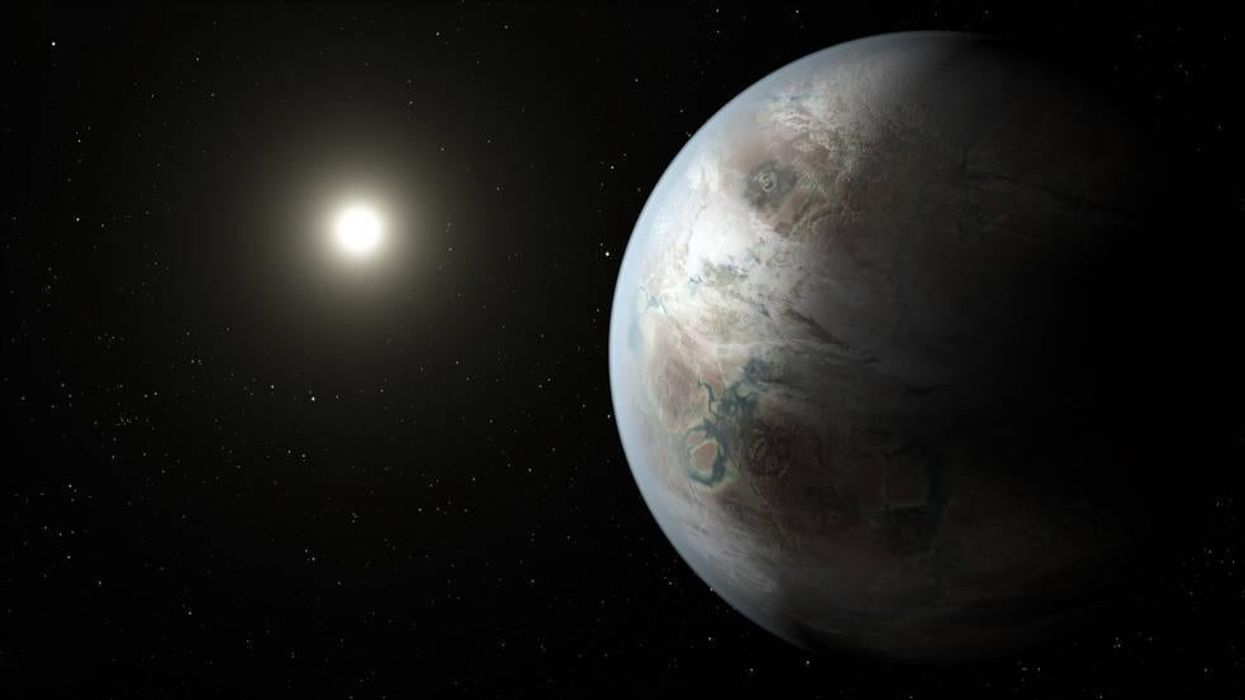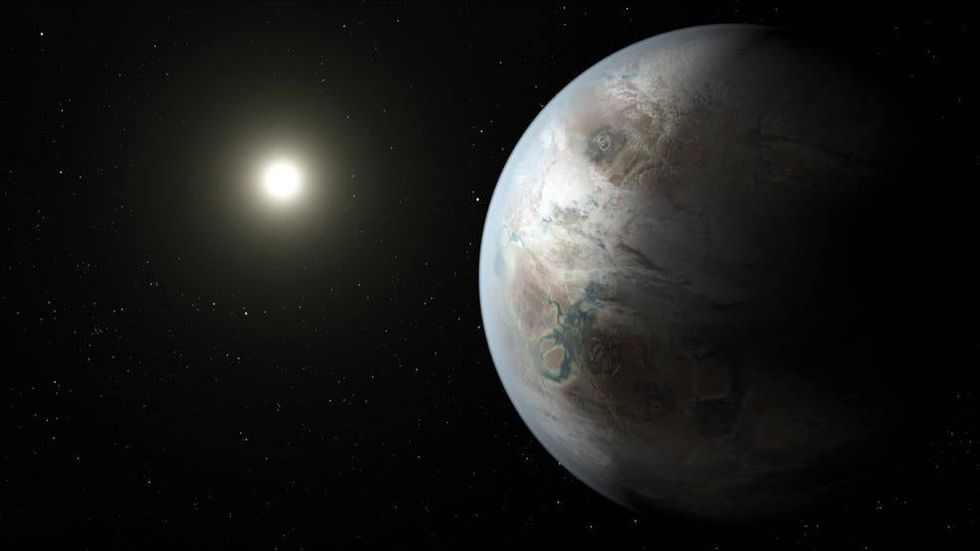Science & Tech
Cahal Milmo
Jul 23, 2015

Earth has a “bigger, older cousin” with an atmosphere that could contain water and therefore presents a “substantial opportunity” for extraterrestrial life, Nasa scientists have announced.
The discovery of what the American space agency said was the nearest thing yet to an “Earth 2.0” was based on the observations of the Kepler space telescope which has been scanning the Milky Way for Earth-like planets since 2009.
The telescope had hitherto found more than 1,000 potential candidates but a panel of four eminent scientists, including a British-based astrophysicist, revealed the discovery of Kepler-452b - a “super-Earth” some 1,400 light years away.
The deep space “exoplanet”, which is about 60 per cent larger than Earth, is the first to be found in a comparable “habitable zone” to this planet in terms of its distance from its “star”, which is also of a comparable size to the sun.
John Grunsfield, associate administrator at Nasa's Science Mission Directorate, said: “The Kepler exoplanet explorer has discovered a planet and star which most closely resemble the Earth and our Sun. This exciting result brings us one step closer to finding an Earth 2.0.”
Nasa said it was still assessing the data from the telescope and other Earth-based observatories but said there was a “better than even chance” that the Kepler-452b was rocky and the temperatures would be right for the generation of water, “the essential ingredient for life as we know it”.
The new planet’s star is estimated to be about six billion years old - some 1.5 billion years older than the sun, and therefore raised the momentous possibility that life could have developed on its surface, Nasa said.
Jon Jenkins, who has led the Nasa team in California tasked with analysing the data from the telescope, said: “It’s awe-inspiring to consider that this planet has spent six billion years in the habitable zone of its star, longer than Earth. That’s substantial opportunity for life to arise, should all the necessary ingredients and conditions for life exist on this planet.”
He added: “We can think of Kepler-452b as an older, bigger cousin to Earth, providing an opportunity to understand and reflect upon Earth’s evolving environment.”
The scientists said they could not yet tell if the planet was supporting life but the sunlight from its star is comparable to that experienced on the Earth.
Nasa said the planet would have a gravity force twice that of Earth and a year would last 385 days. In a statement, the agency added: “While its mass and composition are not yet determined, previous research suggests that planets the size of Kepler-452b have a better than even chance of being rocky.”
More: This Nasa gif shows just how amazing New Horizons's Pluto fly-past was
Top 100
The Conversation (0)














